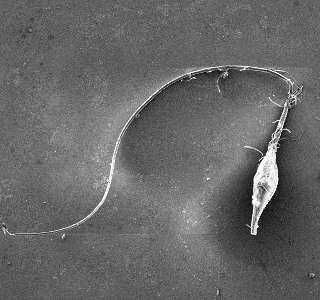Using AI to control energy for indoor agriculture
30 September 2024
Published online 14 November 2018
Sperm-like microrobots could be future drug carriers.

Scientists have now developed a polymer-based, soft microrobot that mimics the shape and motion of sperm cells. It propels forwards in a specific fluid under the influence of an external magnetic field.
The robotic sperm, made by a team from Egypt and Germany, has an elliptical, magnetic head and a flexible, ultra-thin tail. It swims when it’s immersed in silicone oil and exposed to an external magnetic field, beating its tail along its length.
Changing the patterns of the magnetic fields changes the speed of the robot. It gains speed when its tail takes a helical shape.
Since it is possible to remotely control the microrobots, they could be used to navigate the cardiovascular system and other deep-seated regions in the body to deliver drugs, such as anti-cancer therapies, says mechatronics engineer Islam Khalil from the German University in Cairo.
The team is now devising ways to load the microrobots with drugs. In a follow-up study, they plan to test their efficiency in ferrying drugs to specific cells.
doi:10.1038/nmiddleeast.2018.144
Khalil, I. S. M. et al. Controllable switching between planar and helical flagellar swimming of a soft robotic sperm. PLOS One 13, e0206456 (2018).
Stay connected: